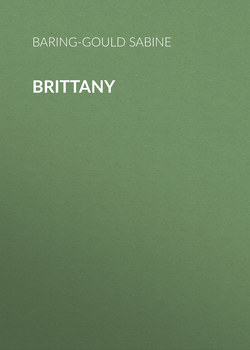Читать книгу Brittany - Baring-Gould Sabine, Baring-Gould Sabine - Страница 3
II. Botany
ОглавлениеThe botany of Brittany is little varied owing to the slight variation in the soil and subsoil, schist and granite. It is but in rare spots where occurs limestone that the flora is different. It may be roughly divided into the class of plants that affect the inland districts and the moors, and that which flourishes on the seaboard. The flora of a slate and granitic region, whether in Scotland, Cornwall or Brittany, is much the same. In the Guérande, where there are extensive marshes, an interesting collection may be made of aquatic plants, both those living in sweet water bogs and those that grow in brackish water.
A complete flora cannot be here attempted; a brief account must suffice, with indications as to the habitat of the rarer specimens.
As one leaves the Loire, pre-eminently the mouth of the Vilaine, it is easy to note the gradual disappearance of many plants that are common south of them. A few that abound there may still occur, but as stragglers and stunted. And this contrast becomes more striking the further north we go. The cause of the poverty of the Breton flora is the uniformity of the soil and the absence of calcareous rocks, and this deprives us of an entire series of plants that abound in Normandy although the climate there is more rigorous. A small number does exist, but only, as already intimated, where there are pockets of limestone, or else on the seaboard, where they can feed on the wreckage of shells cast up by the sea, and carried inland by the gales with the sand.
The following is a list of the plants found in calcareous soil in Brittany: —
The maritime region is more rich and interesting, and in addition to such as may be found in limestone districts already registered, the following is given as a list of plants that grow in sand: —
Brittany, as already intimated, possesses no true mountains, only elevated moorland. There are consequently to be found there no true mountainous plants. Lycopodium Selago is rare on a few elevated spots; Viola palustris and Polystichum oreopteris belong to a submountainous district. The only exceptional plant is a peculiar form of Silene maritima that grows on the summit of all the rocks of the Monts d' Arrée. This range was once doubtless covered by forest, as is shown by the presence on it of Vaccinium myrtillus, a plant that lives in the shade of trees, and which lingers on, in a stunted condition, although the sheltering boughs are long departed.
The following is a list of some of the plants of Lower Brittany that are rare in the departments of Finistère, Morbihan, and Côtes-du-Nord, omitting the names of those already given as pertaining to calcareous soils and the seaboard sands: —
These in addition have been noted in Finistère: —
These also in the Côtes-du-Nord: —
Côtes-du-Nord has the advantage of the limestone bed of S. Juvat, where many of the plants given in the first list may be gathered. Ille-et-Vilaine is still more favourably situated for calcareous rocks. There is a considerable basin south of Rennes, with a corresponding flora, generally known to botanists as the limestone tract of S. Jacques.
Such plants as are common throughout the country have not been included in the lists.
